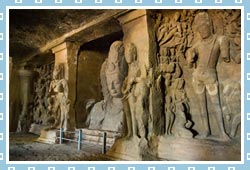 |
A Glorious Heritage
The Hindu Rule
Originally, the seven islands were a part of the kingdom of Ashoka. After Ashoka's demise, countless rulers of the Silahara dynasty took over until the Kingdom of Gujarat annexed the islands in 1343 AD and remained such till 1543 AD.
Portuguese Colonization
In 1543 AD, the Portuguese seized the isles from Bahadur Shah of Gujarat and they remained in their control until 1661. Following this period, the isles were ceded as dowry to Catherine de Braganza when she married Charles II of England. He, in turn, leased the isles to the East India Company during their colonization in 1668 and that's when the city was named Bombay. In a matter of seven years, the population of the city rose from a mere 10,000 to 60,000 in 1675. After the population in the city began to grow, the East India Company officially transferred their headquarters from Surat to the new city called Bombay.
The Hornby Vellard And Industrialization
The Hornby Vellard was one of the first engineering projects to be undertaken in Mumbai. William Hornby, the governor of Bombay, initiated the project in the early 18th century despite harsh opposition from the East India Company. Thereon, the city began to take shape with several civil engineering projects underway, marking the birth of the Industrial Revolution. The seven islands were finally merged into one single mass in 1845, and in 1853, the country's first railway connection was accomplished between Bombay and Thane. The city was under the rule of the Company's hands until the revolt in 1857.
The opening up of the Suez Canal in 1869 also meant that connections between Bombay and the rest of the world were open, resulting in Bombay becoming one of the major ports in India. Just before gaining Independence, the city witnessed large scale Hindu-Muslim riots that resulted in colossal massacres and turmoil.
Post-Independence
Post-independence, the city expanded drastically and a number of suburban towns were incorporated within the city limits such as Borivali, Andheri, Malad, Thane and Bandra. In 1960, Bombay became the new capital of Maharashtra. Sky-scrapers, towering architecture, the Bombay Stock Exchange, tarred roads and a boom in the secondary and tertiary sector changed the city's status and brought it up to one of the top four cities in the country. Today, Mumbai is the fourth most populous city in the world.
Mumbai is the business capital of India and is also one on the largest cities in the country. The present population of Mumbai is estimated to be millions and is still growing. Not many know however, how the population grew or how the city got its status as the commercial capital of India. The insight into the history of this glorious city is the answer to its inspiriting beginnings and eminence around the world.